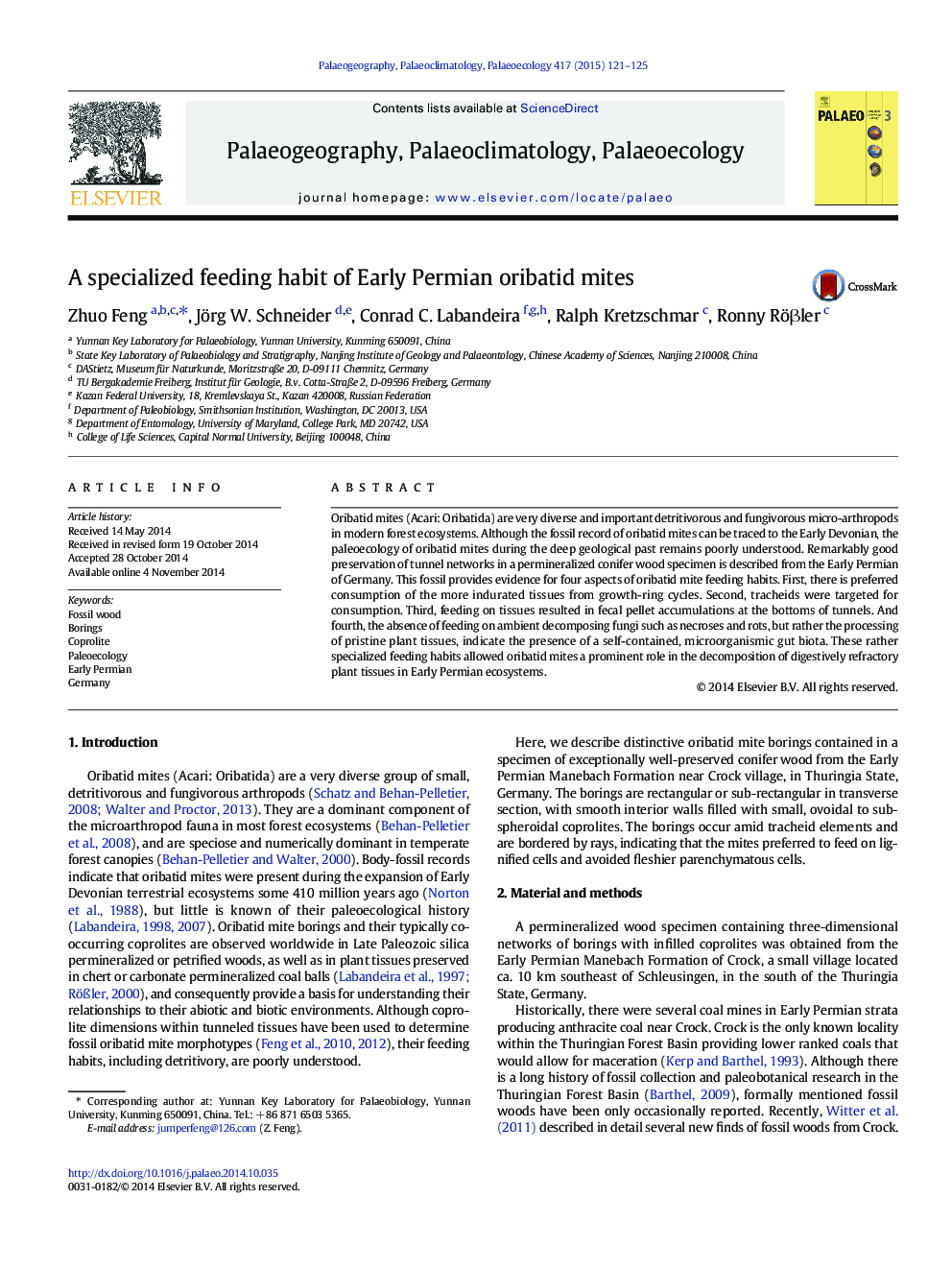| Article ID | Journal | Published Year | Pages | File Type |
|---|---|---|---|---|
| 6349850 | Palaeogeography, Palaeoclimatology, Palaeoecology | 2015 | 5 Pages |
Abstract
Oribatid mites (Acari: Oribatida) are very diverse and important detritivorous and fungivorous micro-arthropods in modern forest ecosystems. Although the fossil record of oribatid mites can be traced to the Early Devonian, the paleoecology of oribatid mites during the deep geological past remains poorly understood. Remarkably good preservation of tunnel networks in a permineralized conifer wood specimen is described from the Early Permian of Germany. This fossil provides evidence for four aspects of oribatid mite feeding habits. First, there is preferred consumption of the more indurated tissues from growth-ring cycles. Second, tracheids were targeted for consumption. Third, feeding on tissues resulted in fecal pellet accumulations at the bottoms of tunnels. And fourth, the absence of feeding on ambient decomposing fungi such as necroses and rots, but rather the processing of pristine plant tissues, indicate the presence of a self-contained, microorganismic gut biota. These rather specialized feeding habits allowed oribatid mites a prominent role in the decomposition of digestively refractory plant tissues in Early Permian ecosystems.
Related Topics
Physical Sciences and Engineering
Earth and Planetary Sciences
Earth-Surface Processes
Authors
Zhuo Feng, Jörg W. Schneider, Conrad C. Labandeira, Ralph Kretzschmar, Ronny Röβler,
